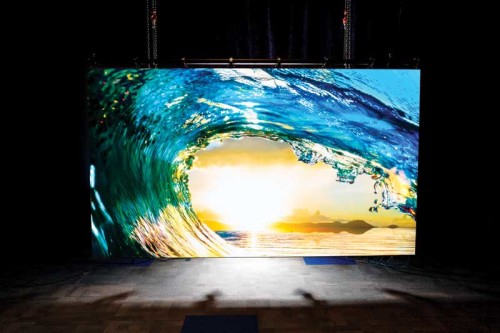
Photos courtesy NanoLumens
By Wes Funsch
Today, digital signage is often the first way a business introduces itself to the public. The medium provides a compelling means by which to identify a brand to both potential and existing customers. As such, it can leave a strong—or weak—first impression.
In addition to helping create a memorable customer experience, the return on investment (ROI) for digital signage has improved because of reductions in hardware costs. According to Futuresource Consulting, for example, the $2 billion light-emitting diode (LED) display market is growing by 15 per cent annually, which has helped achieve economies of scale. Citing prices that have “aggressively eroded,” McKinsey & Co. reports the payback time for LED displays will drop to one to two years in 2016.
Before investing in LED displays, however, it is important to understand the options, consider a variety of factors and make an informed decision. Every purchasing process begins with product research that becomes more detailed as the customer’s needs are established and potential vendors are identified. For customers, the entire process from initial research to installation can require anywhere from one month to two years.
Evaluating technologies
Today’s businesses have many choices for their digital signage deployments. Selecting the most appropriate technology will depend on their specific needs and restrictions, along with all of the following criteria:
- Size, shape and weight restrictions for the display space.
- Ambient light in the space.
- Expected viewing distance.
- Ease of content production.
- Budget for energy consumption.
- Allowances for noise and heat generation.
- Desired colour gamut, image resolution and brightness levels.

Display brightness should be specified based on ambient light conditions and expected viewing distances.
If heat restrictions apply to the space where the display will be installed, for example, it will be important to compare models based on the British thermal units (BTUs) they generate.
Screen brightness, meanwhile, is measured in nits, which refer specifically to luminous intensity of a surface in a given direction per unit of projected area. The more ambient light there is in that space, the brighter the display will need to be to ensure high visibility for its audience. The recommended brightness for indoor displays will vary based on the environment, but for outdoor installations operating during daylight hours, displays need to be rated for a minimum of 5,000 nits.





